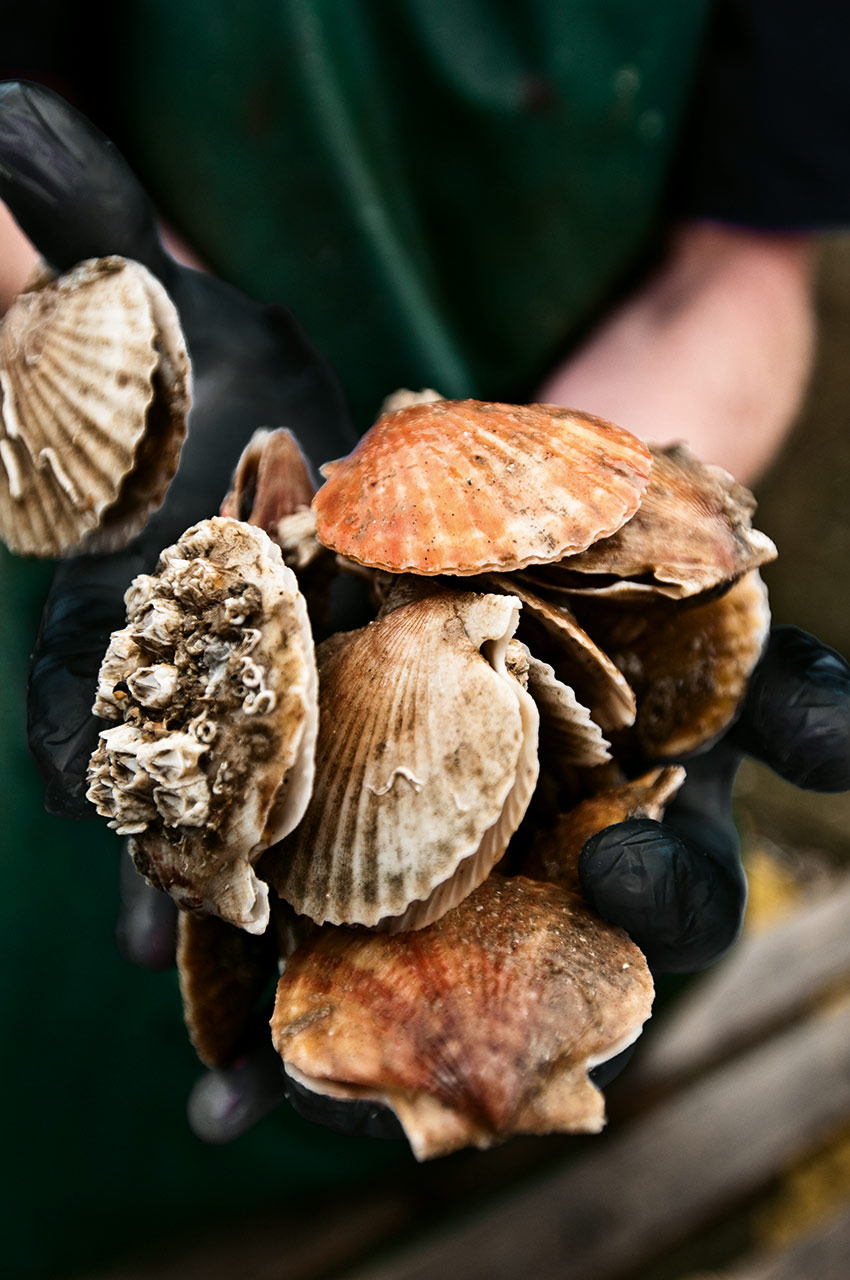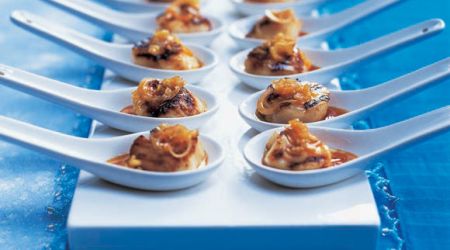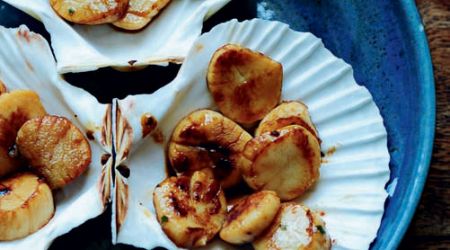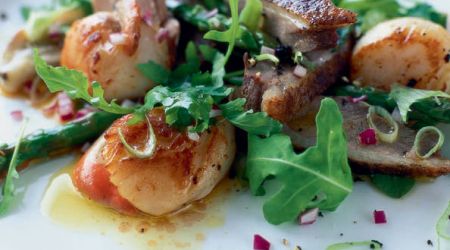Scallops
Whether it’s a queen or a king, the scallop is shellfish royalty in restaurants and on dining tables across the country... with recipes by Linda Tubby
For a shellfish that was once considered a poor-man’s seafood, eaten only by fisherman who couldn’t find a market for them, the scallop has done pretty well for itself. In the UK each year 15-20,000 tonnes are caught, and with each tonne averaging between 5,500 and 6,000 scallops, that’s a total of 100 million of the bivalve molluscs heading for dinner plates across Europe.
And what an entrance they make. Often served as a starter, the scallop, with its tender, glistening sweet flesh, works with anything from pea and bacon to sage and red chillies. But most advocates believe that it’s best to let their own flavour do the talking.
‘People love scallops because they’ve got a nice, clean taste and firm, rich flesh,’ says John Hermse of the Scallop Association. ‘The shape of is so appealing too – the aesthetics are tremendous – it’s a little round bundle that looks as if it’s just ready to be eaten. There’s a sweet flavour, with just a hint of an aftertaste that you can give a little bit of seasoning to.’
Dredged or diver-caught, both king and queen scallops (the latter being slightly smaller and having two bowl-shaped shell halves rather than one flat and one bowl) have undergone a renaissance. ‘They’re probably one of the most popular dishes in my restaurant,’ explains Mitch Tonks, chef and co-owner of The Seahorse in Dartmouth and Rockfish Grill in Clifton. ‘I adore them; they’re boneless and sweet – everybody seems to love them. Once you could only get them in Chinese restaurants – that’s where I first tried them – but they’ve become more popular in recent years. They look great too, especially when served in their shell, and are very versatile.
‘I like to eat them raw, maybe spiced up with a bit of lime juice, chilli and coriander. Or I sear them in a hot frying pan with a little bit of butter. Scallops and bacon in a salad is a classic, and they work with sage too, or skewered on some rosemary. Steaming them with ginger and spring onions gives them a gorgeous oriental feel.’
For a more unusual serving idea, John has a suggestion: ‘I know fishermen who, if they find any damaged scallops, will shuck them and pickle them in sweet vinegar for a few days – they’re absolutely beautiful. In fact, I’m really surprised that someone hasn’t come up with that as a real high-end delicatessen item.’
It wasn’t until the 1960s, when a Scottish fisherman called John King created a dredger with spring-loaded teeth that pinged the scallops away from the gravelly seabed and into nets, that scallop fishing became commercially viable. Living in beds up to 50 square miles, containing as many as 1,000 tonnes of scallops, the shellfish steadily grew in popularity, with English fisheries catching on during the 1980s. These days, beyond the west coast of Scotland, they can be found in the deep waters of the English Channel, the Bristol Channel and the Welsh coast (Cardigan Bay).
Debate rages about the virtues of diver-caught versus dredger scallops. Some believe that divers threaten stocks by selecting the biggest and strongest scallops, others argue that sea beds are damaged by dredging. However, as long as the beds are rotated, scallops remain sustainable. And the quality of the British scallop certainly isn’t in question – as long as a few basics are checked. ‘If you are buying whole scallops, make sure the shell is closed and there are no cracks – because those could be dead, and scallops should be live when processed,’ John explains. ‘If you are buying shelled scallops, they should look clean and creamy white, with no greyness. If they look sticky and viscous, be very wary.’

Recipes
Get Premium access to all the latest content online
Subscribe and view full print editions online... Subscribe




